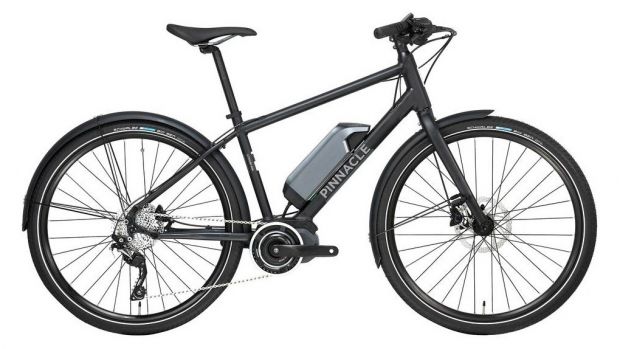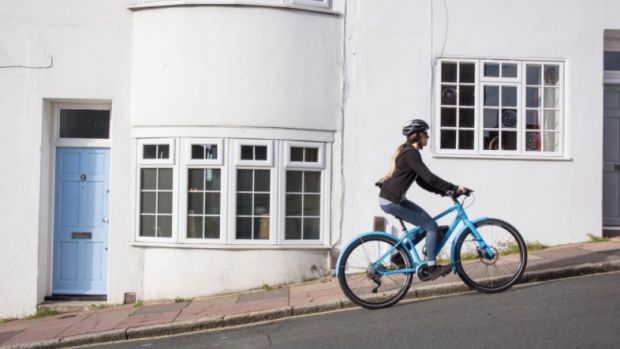You can trust Coach
Electric bikes are heading for the mainstream. This is clear from the fact they are no longer confined to specialist shops but popping up in every branch of Evans Cycles and Halfords.
Evans’s in-house brand Pinnacle has even adapted its popular Lithium commuter hybrid to create an electrified option in the form of the Lithium Ion, a transformation achieved by adding the Shimano Steps pedal-assist system.
RECOMMENDED: Electric Bike Buyers’ Guide

As you’d expect, adding the battery and motor increases the weight of the Lithium considerably – to just shy of 20kg in a medium size, compared with 11-12kg for the non-motorised versions of the bike. However, 20kg is not too bad for an e-bike, and I found even with a large Lithium Ion, I was able to lift it up the stairs at my flat without too much trouble (and I have arms like pipe cleaners).
Once you’re up and running, the Lithium Ion is a joy to ride, its wide tyres rolling smoothly through the potholes and drain covers that litter city streets. The assistance is delivered very smoothly, and if you opt for the highest of the three levels of assist, you’ll find you can tackle even long, steep hills with ease.

That said, the Ion is not the quickest e-bike off the mark, even if you switch to high assistance while waiting at traffic lights. Many e-bikes deliver a kick of power when you start pedalling to get you going; this can be a little disconcerting but it does the job at getting the heavy bikes moving quickly. The power arrives more smoothly on the Ion, but that means it takes a while to get up to speed, which isn’t ideal when you hit congested roads with lots of traffic lights and you’re stopping and starting constantly.
RECOMMENDED: The Best Electric Bikes For 2017
Sign up for workout ideas, training advice, reviews of the latest gear and more.
I’d also say I spent a lot less time in the lowest, Eco mode of the assist when using the Ion than other e-bikes. The middle of the three settings was great for cruising around town, but it felt slightly under-powered when in Eco. One effect of this is to reduce battery life, although the Ion is still impressive on that front. When riding mostly on Normal mode, switching to High on uphills and Eco/free-wheeling on downhills, I found I could get 70-80km on one charge reliably. It’s not the most comfortable e-bike to ride without assistance, however, so it’s worth ensuring you do have plenty of juice.
A couple of small annoyances with the Ion are the lack of integrated lights and a kickstand. Lights that run off the battery are an obvious inclusion on e-bikes and do away with a common annoyance to cycling in general – forgetting to charge your lights, or indeed forgetting them entirely. And a kickstand is a must on a bike this heavy, because trying to hold it upright with one hand while grabbing something from your bag is no easy feat.
The Lithium Ion offers a solid package as an e-bike that’s great for commuting, but also has the juice for longer rides on the weekend. Lights, a kickstand and slightly more power when setting off would have been welcome, but these are minor grievances compared to the overall comfort of the ride on the Ion – which, thanks largely to its chunky tyres, is exceptional.
£2,000 (reduced to £1,900 at time of publication), buy on evanscycles.com

Nick Harris-Fry is a journalist who has been covering health and fitness since 2015. Nick is an avid runner, covering 70-110km a week, which gives him ample opportunity to test a wide range of running shoes and running gear. He is also the chief tester for fitness trackers and running watches, treadmills and exercise bikes, and workout headphones.

